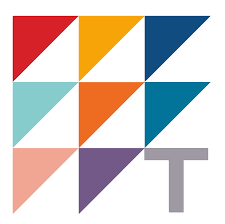Audio and Video Postproduction Program – Montreal
Key Points
Post-production is both the science and the art of bringing a video production (such as a movie or television show) to life.
In simple terms, post-production refers to all the tasks that occur after filming is complete and editing of visual and audio materials begins.
Trebas Institute’s Audio Video Post-Production Program gives you all the knowledge and skills to thrive in the post-production industry.
Receive highly specialized hands-on training to master all the major facets of the discipline: Video Editing, Sound Editing and Mixing, Foley, Automatic Dialog Replacement (ADR), Motion Graphics Design, the list goes on! You also work with industry-standard hardware and software, better preparing you to enter the workforce upon graduation.
Career opportunities
Graduates pursue successful careers in the following roles:
- Video editor
- Assistant editor
- Sound editor
- Supervisor / Post-Production Coordinator
- Post supervisor
- Foley Artist
- Color grading and correction artist
- Digital Overlay Graphic Designer
Program structure
Skills and competences
Throughout this program, you will develop some of the following skills and competencies:
- Achieve a high level of proficiency in all key software programs and equipment used in audio and video post-production.
- Successfully navigate the post-production industry
- Record and edit sound for video, from dialogue (voice), footsteps, ambient noises and more.
- Analyze the various takes (video sequences) and sound recordings and set up a project plan and workflow accordingly
- Apply lighting techniques and “green screen” to shoot special effects
- Record, edit, replace and integrate dialogue (voice) for video
- Create the credits (opening and closing) of a film or television production.
- Perform color correction and color grading for video
- Seamlessly combine visuals from a variety of different sources in one image / scene
- And much more!
Admission requirements
Under the provisions of section 4 of the University Education Regulations in relation to admission conditions, a person who has received instruction deemed sufficient by the university and meets any of the following conditions may be admitted to a study program leading to a Certification of university studies:
- The person has interrupted full-time studies or has completed full-time post-secondary studies for at least 2 consecutive terms or 1 school year;
- The person is covered by an agreement between the university and an employer or by a government study program;
- The person has interrupted his studies full-time for a period and has completed post-secondary studies full-time for a period; or
- The person has a high school vocational diploma.
Specific admission criteria for an ACS / AEC.
A person applying for an ACS / AEC program must have sufficient oral and written proficiency in the language of instruction. A person who has studied outside of Quebec must provide the result of a proficiency test for the language of instruction.
For programs where the language of instruction is English, the accepted language proficiency tests are:
- International English Language Testing System (IELTS): 5
- Test of English as a Foreign Language (TOEFL) IBT: 55
- Cambridge English Language Assessment: 162
- Canadian Academic English Language (CAEL): 40
- Academic PTE: 42
- Duolingo: 85
Learn more about our educational offer
Request your quote
An advisor will contact you by phone and email within the following hours

